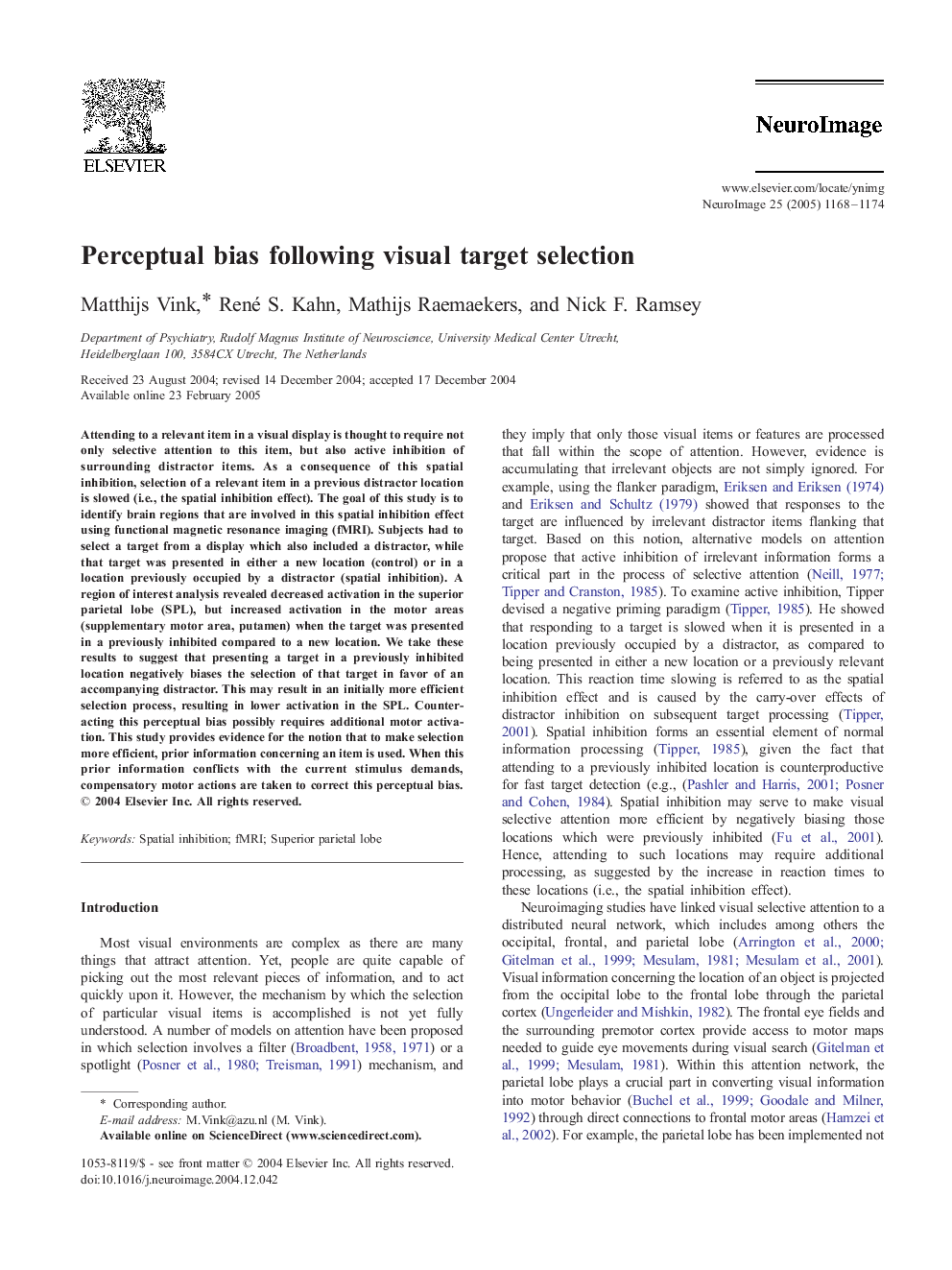| Article ID | Journal | Published Year | Pages | File Type |
|---|---|---|---|---|
| 9198045 | NeuroImage | 2005 | 7 Pages |
Abstract
Attending to a relevant item in a visual display is thought to require not only selective attention to this item, but also active inhibition of surrounding distractor items. As a consequence of this spatial inhibition, selection of a relevant item in a previous distractor location is slowed (i.e., the spatial inhibition effect). The goal of this study is to identify brain regions that are involved in this spatial inhibition effect using functional magnetic resonance imaging (fMRI). Subjects had to select a target from a display which also included a distractor, while that target was presented in either a new location (control) or in a location previously occupied by a distractor (spatial inhibition). A region of interest analysis revealed decreased activation in the superior parietal lobe (SPL), but increased activation in the motor areas (supplementary motor area, putamen) when the target was presented in a previously inhibited compared to a new location. We take these results to suggest that presenting a target in a previously inhibited location negatively biases the selection of that target in favor of an accompanying distractor. This may result in an initially more efficient selection process, resulting in lower activation in the SPL. Counteracting this perceptual bias possibly requires additional motor activation. This study provides evidence for the notion that to make selection more efficient, prior information concerning an item is used. When this prior information conflicts with the current stimulus demands, compensatory motor actions are taken to correct this perceptual bias.
Keywords
Related Topics
Life Sciences
Neuroscience
Cognitive Neuroscience
Authors
Matthijs Vink, René S. Kahn, Mathijs Raemaekers, Nick F. Ramsey,
